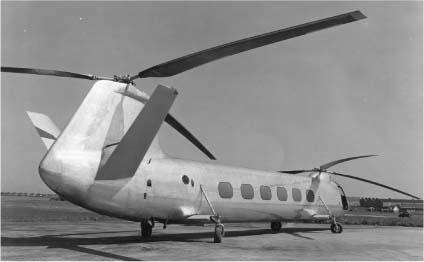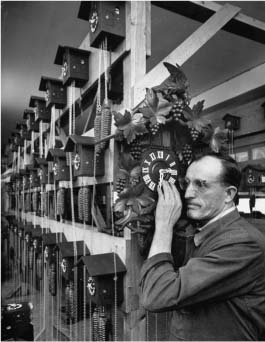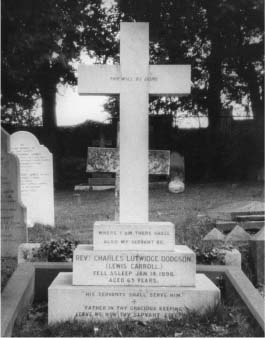Lyttelton's Britain (12 page)
Read Lyttelton's Britain Online
Authors: Iain Pattinson

T
HE FINE SOUTH
England town of Woking is described by no less an authority than the Longer OED as: ‘A town in southern England’.
As you might expect, Woking revels in a fascinating history. It was in 1587 that Vasco Da Gama set sail in search of trade routes, and his vessel was blown off course into a broad river estuary. Trekking inland for several days, Da Gama came upon a small settlement and claimed it for King Ferdinand of Portugal. This is what we now call the Amazon Basin. But just think. If only he’d turned right instead of left coming out of Lisbon, Woking could so easily now be the capital of Brazil.
Old Woking is first mentioned in the Domesday Book, when the Normans arrived at what was then a hunting heath, noted for its trade in animal skins. When their new rulers came to buy pelts, the local Saxons are recorded as helpfully putting up signs directing all visiting Norman barons in the direction of the fur queue.
In the 16th Century, Henry VIII was a frequent visitor to Woking Palace, whom he saw beat West Bromwich Albion two-nil in a thrilling cup-tie in 1536.
John Donne spent some time nearby on the Wey Navigation Canal, where he wrote
Fear Not for Whom the Bell Tolls
in between presenting his marvellous Radio Two programme.
Modern Woking is famously home to the Kenwood Mixer,
named after its inventor Ken Woodmixer. Life was transformed for a generation of young 1960s’ housewives experiencing the joys of its electrically induced pulse mechanism, and as a bonus it chopped food as well.
The town guide tells us that Woking’s environs are famous for their wildlife habitats, home to rare types of bee, adders and the unique spider-hunting wasp. Sadly, the Woking & District Wasp Pack have recently had their spider hunt disrupted by saboteurs, laying false trails of jam sandwiches.
In 1994 the Spice Girls started their sensational pop careers at Woking’s Knaphill Studio. It was on 17th July that five unknown but supremely talented female vocalists were booked in there for a recording session, so the Spice Girls had to wait.
Other famous names associated with the area include the Formula One team McLaren and the writer of
War of the Worlds
, H. G. Wells. Proud Woking commemorated these local success stories by erecting a huge racing car and a seventeen-metre statue of a martian. One can only imagine the relief felt by the council when they missed out on leasing premises to the Viagra corporation.

The prototype Kenwood mixer proved a little unwieldy

I
T’S NOT EVERY
Surrey commuter town that can boast not only a bustling Bohemian Latin Quarter but also a Moorish citadel surrounded by a warren of dark sinister streets that provided film locations for Truffaut, Fassbinder and Bergman, and neither can Guildford.
The town of Guildford nestles on the North Downs, the ridge of hills formed during the Tertiary Period when they were attached to what are now the Swiss Alps. This ancient connection is still reflected at Guildford’s annual festival of cuckoo clocks, chocolate and Nazi-looted fine art.
The town is first recorded in the 9th Century when King Alfred used Guildford as a base to launch his attack on Danish-held London, his army managing to reach the outskirts of the capital in less than six hours; a feat occasionally matched to this day by South West Trains.
The name Guildford derives from the old English ‘Golden Ford’ and when a new town was recently built nearby, tradition dictated it should be named in similar fashion and so became ‘Little Metallic Bronze Datsun on the Down’.

Cuckoo clocks being lubricated with earwax, Guildford
Guildford really began to grow after the construction of the Wey Navigation Canal, providing 19th Century merchants a means to distribute their products and 20th Century consumers somewhere to dump their old ones.
In 1837, one Josiah Hawkins came to Guildford and built England’s first ever paper mill. Sadly, during the Great Gale of 1838, it blew away.
Nearby are many natural attractions, including Surrey’s highest point at Leith Hill. Allowing for weather conditions, on a reasonable day you can see as far as Orpington. On a perfect day you can’t see it all.
The town is also noted as the burial place of Lewis Carroll, the professor of mathematics who wrote three classic novels:
Alice in Wonderland
and
Alice Through the Looking Glass
. Visiting his grave now, one might wonder where one would ever find a Looking Glass Wonderland today. Well, good news! There’s one on the South Circular between PC World and Allied Carpets.

Lewis Carroll’s grave. Note the inscription ‘Fell asleep January 14th 1898’. Later the law was changed to make it illegal to bury dozing relatives

W
INCHESTER
is a fine city set at the heart of the ancient kingdom of Wessex. The area was originally inhabited by early Britons during the Bronze Age, when they made fine jewellery and tools. With the advent of the Iron Age, improved swords and arrowheads could be fashioned, but when the Ice Age arrived, they found frozen water a poor material for making weapons.
It was the Romans who established a town in Winchester on the site of a small British settlement and called it ‘Wenta Belgarum’. The Latin word ‘wenta’ simply meant ‘home’, while the word ‘belgarum’ indicated a base of rocky hills or ‘tors’. Hence the literal translation: ‘Home Base Tors’.
With the withdrawal of the Romans, the town went into decline until revived as a Saxon stronghold to fend off the Vikings. Much of England to the north-west was terrorised by invading Danes, who forced the native populace to endure such hardships as pillage, slavery, torture and flat-pack kitchen units.
Under the rule of Alfred the Great, Winchester became the capital city of England. Alfred reunited the kingdom in the face of Danish invasion and became known as the father of the English navy, as he had several dozen girlfriends in Portsmouth. It is recorded that Alfred was buried in Winchester in the year 899. However, later historical research has revealed that Alfred didn’t
actually die until 901, so that must have been a traumatic couple of years for the poor man.
With the city constantly expanding, St John’s Hospital was built in Winchester in 935
AD
. Their first ever patient is recorded as one Wil the Shepherd. His descendants still live in the area and treasure the document confirming his admission date, which has been passed down the family since the very day it was received, in 1984. St John’s is believed to be the oldest medieval hospital in Britain. The NHS recently began a modernisation programme to bring all their others up to this standard.
With the building of the cathedral, the city became a venue for Royal weddings. In 1002, Emma, the daughter of the Duke of Normandy, came to Winchester to marry Ethelred the Unready, who used the occasion to launch his unsuccessful range of torch batteries.
By 1900 the mighty cathedral was subsiding and major repair work was required to its foundations. Reconstruction work was supervised by one Francis Fox, who was working on the London Underground. Luckily he was able to fit them in, as he only ever turned up to drive on the Northern Line two days a week. Investigation revealed the substructure had suffered a major fracture, but excavation holes constantly flooded with water. Fox therefore employed a diver called William Walker, whom he supervised with shouts of ‘Mind the gap’.
The cathedral is today a major attraction and houses the 12th Century Winchester Bible, which is beautifully illuminated. This Christmas they’re hoping to get Ainsley Harriott to switch it on.
Another famous name with local associations is that of Jane
Austen, who is pictured in the city’s portrait gallery with her hair in a bun. That was the evidence that got her sacked from the Winchester Grill Burger Bar.
